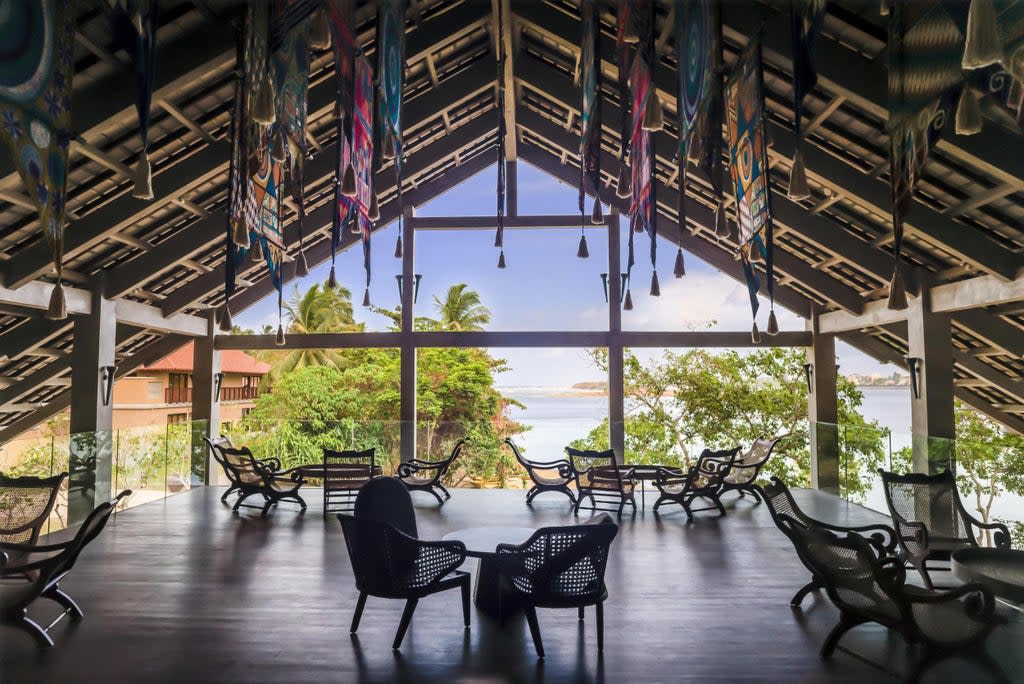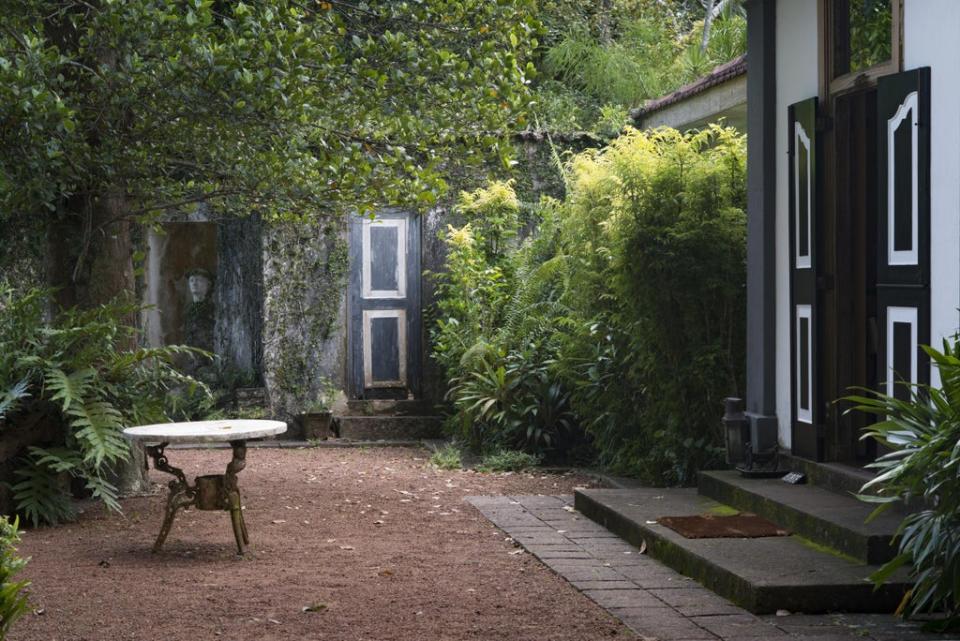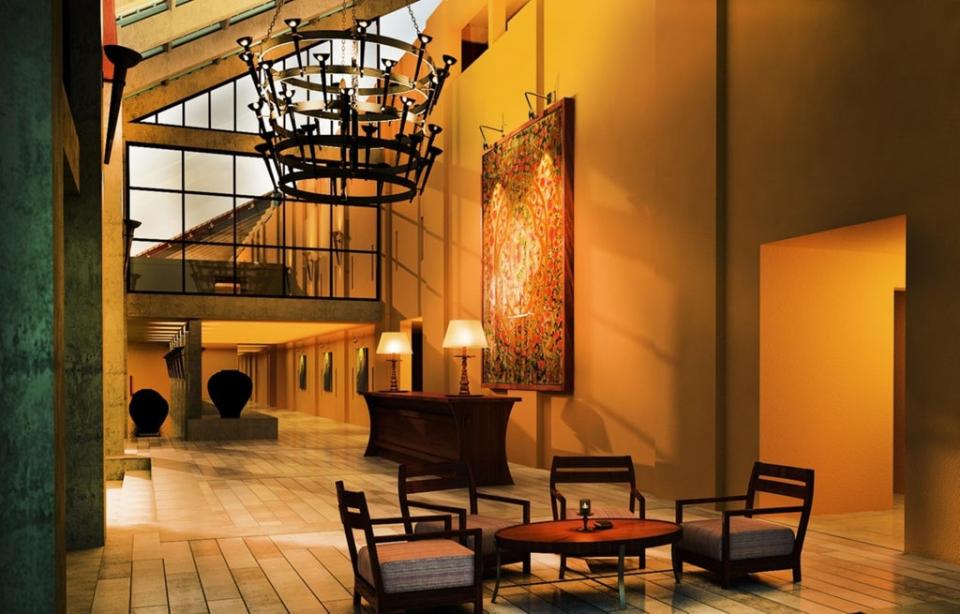How to explore the work of Sri Lanka’s most influential architect

As I pull back my curtain to watch the sun set over the Kandalama reservoir, I suddenly find myself inches from a beady-eyed grey langur monkey peering at me from the other side of the glass. He’s perched nonchalantly on the rail that runs round my window, while a handful of others swing through the trees behind him. The forest almost engulfs the two low, lateral wings of the camouflage green, concrete Kandalama Hotel, which is exactly what was envisioned by the designer – the late Sri Lankan architect Geoffrey Bawa.
The hotel is in the cultural triangle, a short drive from the ancient Dambulla cave temple and Sigiriya, a Unesco rock fortress with over 1,000 steps that I tackle one morning before breakfast (the stunning forest view from the top is worth the sweaty climb).
Sri Lanka has had a difficult six months. The country suffered horrendous terrorist bombings on Easter Sunday, which targeted three luxury hotels and three places of worship, killing 258 people. Some 48 of these were foreign nationals, and the blatant attack on international tourism prompted the Foreign Office to declare the country off-limits to UK nationals – at least, if they expected their travel insurance to be valid or needed any help from the British government during their stay. The country was only removed from the banned list on 6 June, but the six weeks of isolation took their toll. Which is why now is the time to put our tourist pounds to good use and return to this richly diverse island nation.
I'm showing solidarity while on the hunt for Geoffrey Bawa’s buildings. The influential architect (who studied law at Cambridge before switching professions) is known as the father of tropical modernism because he took the design ideas of the movement and made them his own, using local materials that suited the Asian environment. This year is the centenary of his birth and the Geoffrey Bawa Trust is organising a series of exhibitions and events to mark the occasion. The first, being held this month, is a decorative arts installation at Lunuganga, the 25-acre country estate near Bentota on the west coast which he called home. The most anticipated event is the installation series here at the end of the year, which will feature works by Japanese architect Kengo Kuma and American artist Lee Mingwei, among others.
I join a dozen other Bawa fans on a tour of Lunuganga, waiting patiently at the end of an unmarked lane for the metal gates to swing open, eager to see inside what was essentially Bawa’s creative laboratory for 50 years. This is where he tested out new design ideas, modifying the original house, building four bungalows and transforming the former rubber plantation into a dreamy landscape featuring ponds and pavilions, sculptures and lake views, all framed by his favourite frangipani trees. I peek into the garden room, with its buttermilk yellow walls, antique furniture and black and white chequered floor; then I stand under the berry fruit tree in the sprawling grounds where he took afternoon tea, its trunk swooping low from the weights he hung on the branches to shape it; and walk up the hill to Cinnamon Bungalow, the final building he added, which has an almost otherworldly tumbledown feel.

From here I head north up the coast to the Anantara Kalutara hotel, one of Bawa’s final projects, which is set on the beach where the Kalu Ganga river meets the Indian ocean. Although he began designing the hotel in 1995, it lay dormant for almost 20 years until it was completed to his original vision by one of his proteges, architect Channa Daswatte. Bawa’s big idea was to divide the layout of the hotel into quarters with both upper and ground-level corridors connecting different parts of the property. “Choreography of movement is a concept that runs through almost all of Geoffrey’s work,” explains Daswatte, when we meet that afternoon.
He points out the furniture inspired by Bawa’s own collection in the airy lobby space and the three paintings by artist Laki Senanayake hanging in the library alongside Bawa’s architectural drawings. He also draws our attention to the batik banners hanging from the roof, made by his late friend, artist Ena de Silva. She lived at 5 Alfred Place in Colombo, also designed by Bawa, which was named a National Heritage building and reconstructed by the Geoffrey Bawa Trust at Lunuganga after huge public outcry at the news it was to be demolished.

In May, the hotel launched an afternoon tea dedicated to the architect, as well as an app to talk guests through the design ideas behind various spaces. There is also a spa, two pools (the quietest is next to Italian lunch spot Acquolina) and an Asian restaurant, Spice Traders, where I tuck into the most delicious fried cuttlefish and butter chicken for dinner.
On the final day of my whistle-stop trip, I join a group of architecture students on a tour of No 11, a row of modernist houses in Colombo that were Bawa’s city base and office (he previously worked around the corner on Paradise Road at what is now the popular Gallery Cafe). The whole space – which houses a third of his artefacts and art – feels incredibly zen, with water features and lots of natural light streaming through inner open courtyards. Visiting all of these buildings (and there are plenty more too, dotted around the island) is a fascinating insight into Bawa’s architectural thinking – key to which was the notion that they continue to evolve long after the final bricks are laid.
“Once he told me Kandalama would finally be complete only when the leopards are roaming the corridors and the bears are scaling the rooms,” recalls Daswatte. I can almost picture it now.
Travel essentials
Getting there
SriLankan flies direct from London Heathrow to Colombo from £518 return.
Staying there
Doubles at Anantara Kalutara resort from around £292, B&B. Doubles at Kandalama Hotel from around £169, room only.
More information
For more information on the Geoffrey Bawa centenary programme, visit geoffreybawa.com.


